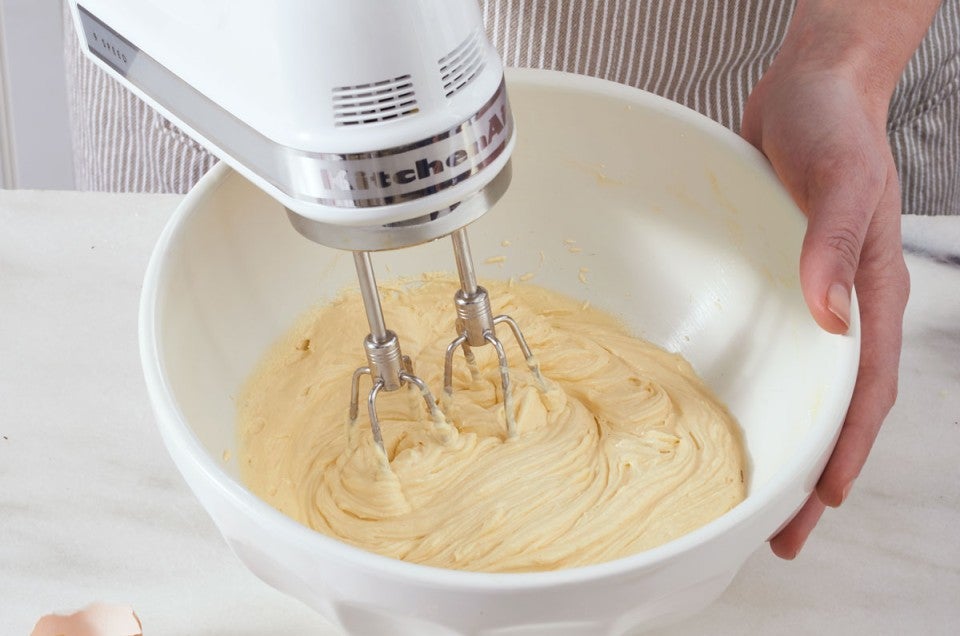


Have you ever blissfully started baking a cake … until suddenly you look down and your beautiful batter has turned into a lumpy, curdled mess?
A broken batter isn’t what you want while baking. So how do you prevent it from happening? Longtime King Arthur baker and former professional pastry chef Susan Reid has a handy trick up her sleeve.
But first, it’s important to know why this unsightly disaster strikes. And that starts with understanding the base of your batter: emulsions.
Most emulsions we encounter are a suspension of fat in water. But think about what happens if you mix oil and water — they stay separate, because they don’t want to blend. This is basically the whole point of emulsions: taking these two incompatible substances and making them come together happily, like a culinary Pride and Prejudice.
In some butter-based cakes, eggs (which contain water) are added to creamed butter and sugar (which is mostly fat) to create what Susan refers to as a “reverse emulsion” — water suspended in fat, rather than the opposite.
Since water and fat don’t naturally get along, this process is done slowly, adding eggs one at a time and waiting until they’re completely mixed — and the water and fat have blended — before trying to force in more water by adding another egg.
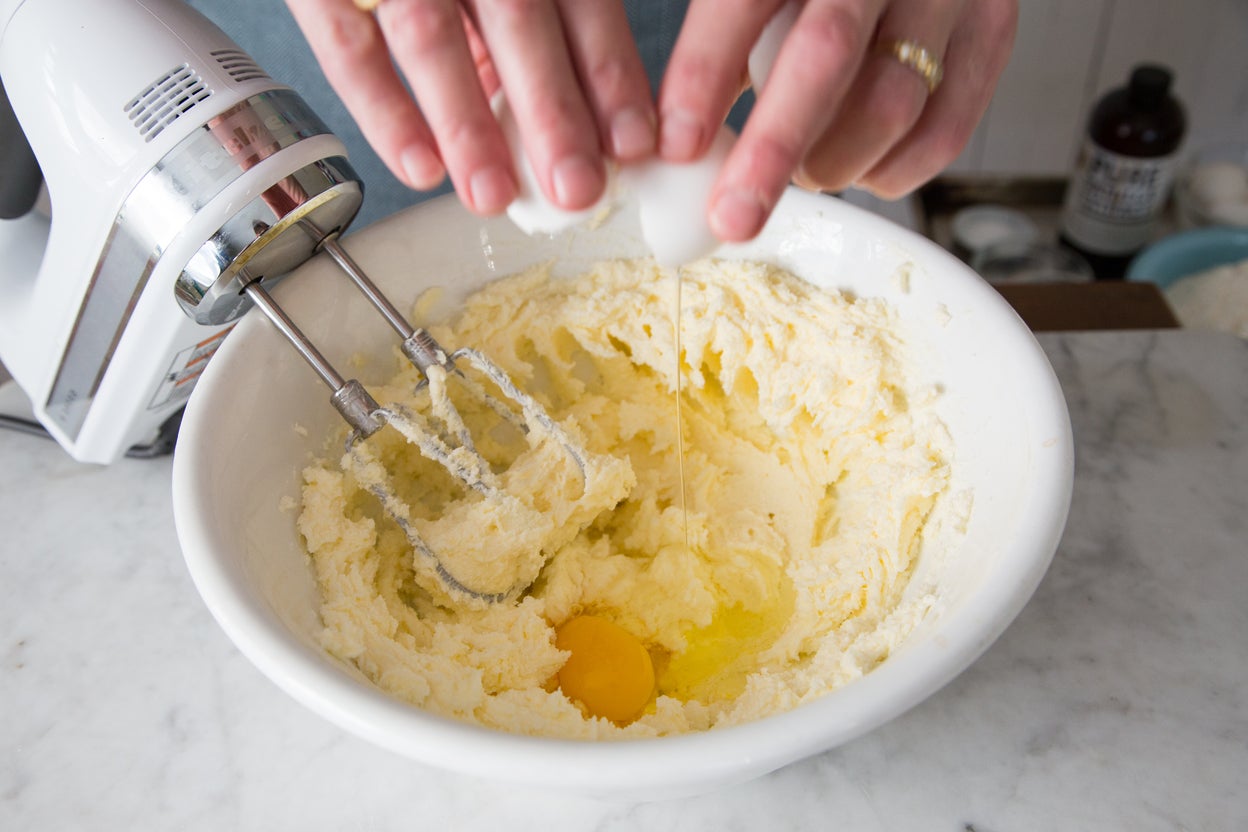
When cake batter is made properly, it forms a stabilized matrix of suspended fat, water, and air to create a smooth, velvety batter. But that suspension is delicate — remember, fat and water don’t want to be together, and they’re always looking for an excuse to bolt away from each other.
The emulsion breaks when the fat can no longer hold the water. This can happen for several reasons: If your eggs are just slightly too cold, they may cause the soft butter to seize up, breaking the emulsion. Or if you rush while beating in the eggs, the emulsion won’t be stable enough to hold in place. And sometimes, there’s simply too much water in the mixture and not enough fat to hold it, no matter how careful you are.
When this happens, your cake batter will look lumpy and curdled, rather than smooth and even. This affects the baked cake, too. You want the final texture of your cake to have a “fine grain and not too many bubbles,” says King Arthur recipe tester Melanie Wanders. With a broken batter, she explains that you could “get little chunks of butter that stay whole when they go into the oven. This affects the baked cake — and not in a good way.” The result is a coarser, less even crumb.
Avoiding curdled cake batter starts with using room temperature ingredients, but that’s not necessarily a guarantee of success. “The biggest lie is that if you have everything at room temperature, you’re fine,” Susan says. “It still curdles. It doesn’t matter what you do or who you are.”
To prevent her cake batters from curdling, Susan uses one simple trick: She adds a couple tablespoons of the recipe’s flour when she mixes in the eggs.
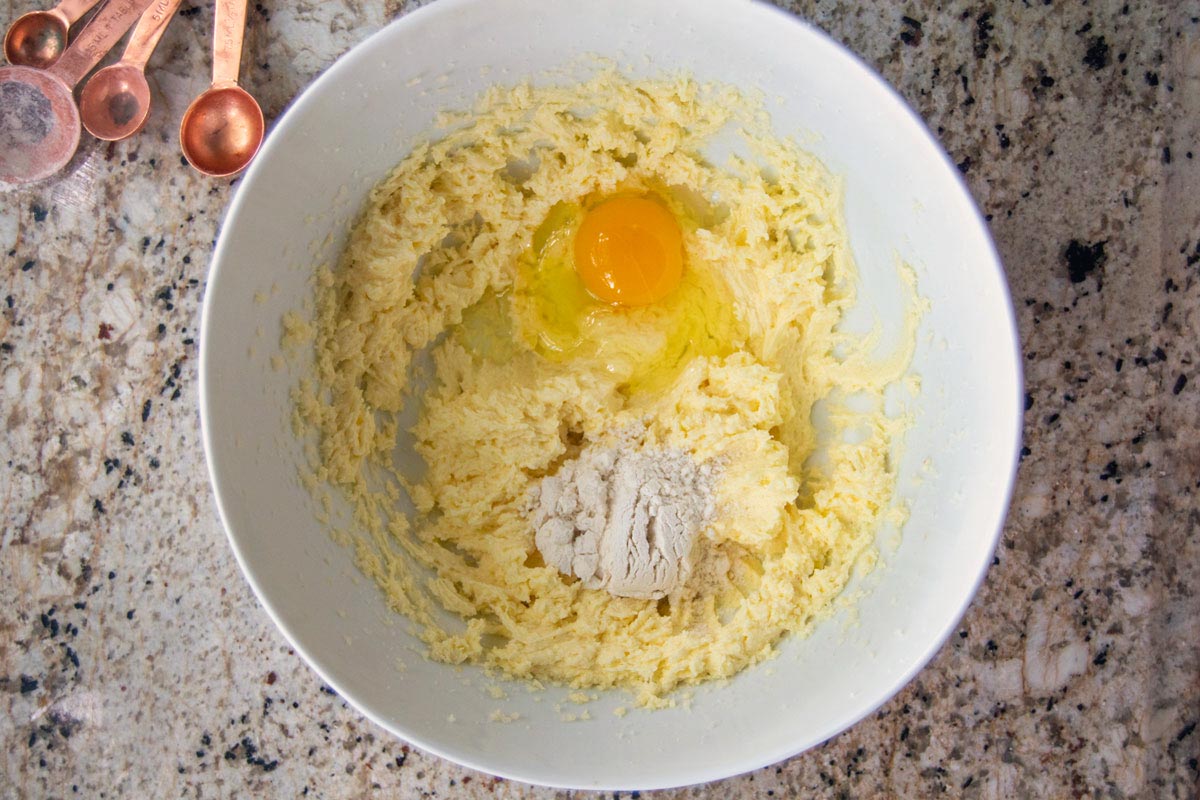
“A lot of cake recipes have around four eggs,” she explains. “Usually the first egg, it’s no problem, because you’re not pushing the ratios that much. The second egg is still OK, but it starts to look a little slimy. And usually, the third egg is the one that does it.” As soon as the batter starts to look slightly curdled, “I’ll give it a couple of tablespoons of the dry ingredients and then it comes right back. And then I’ll put the fourth egg in after that.”
As Susan explains, this trick works because the flour acts like a keystone, sitting between the water molecules and fat molecules throughout the mixture and holding them in place to yield an evenly blended batter.
“The flour doesn’t make the cake any denser,” she says. In fact, the cake has “a nicer, finer grain because you’re not completely breaking the emulsion, then having to bring it back together.”
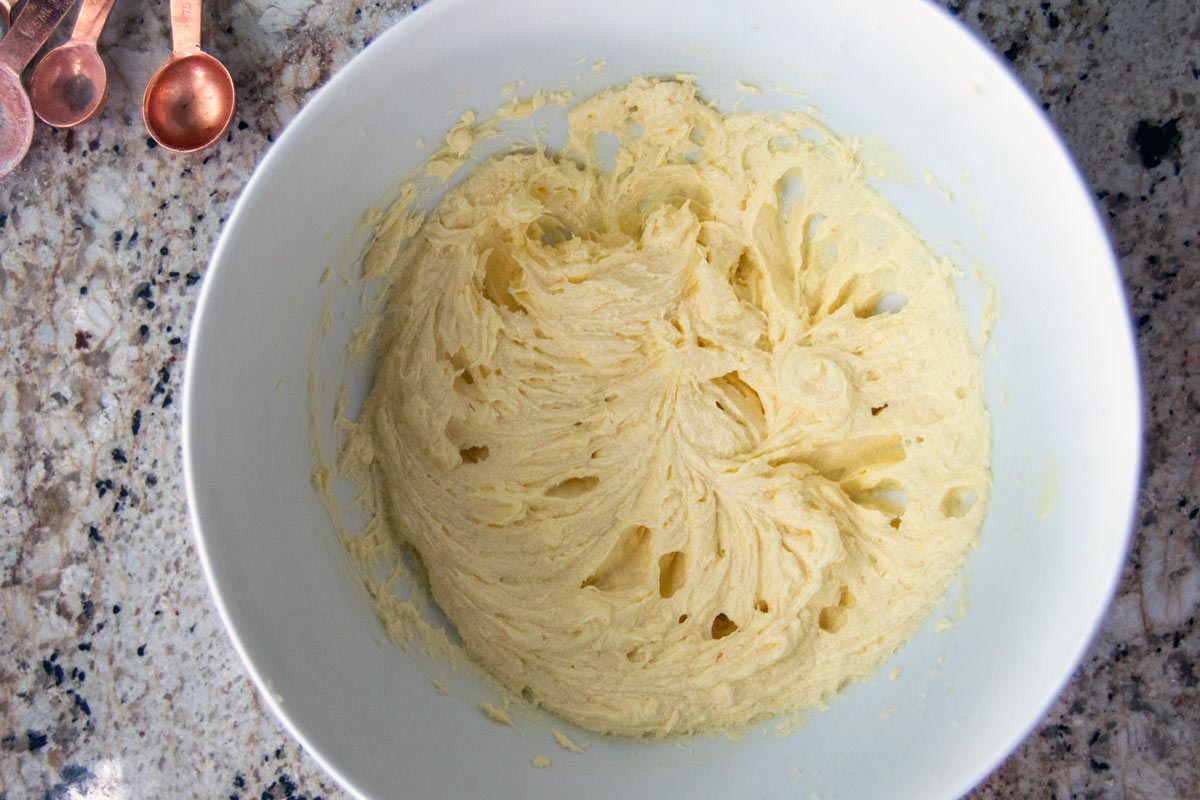
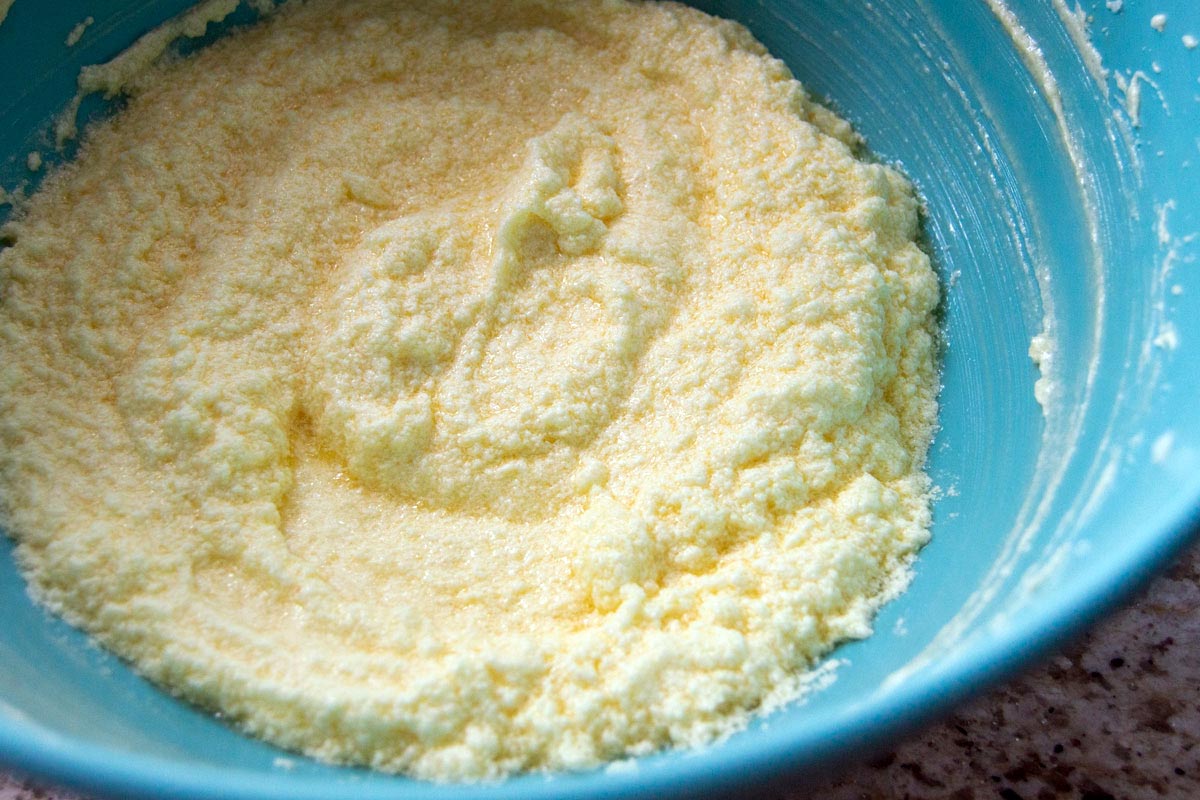
Susan stresses that it’s important to keep a close watch on your cake batter as you mix, because you want to add the flour right as the emulsion starts to break, rather than waiting for it to completely fall apart and trying to overcorrect.
As a former Baking School instructor, Melanie emphasizes this point. “We usually tell students that you want your batters to be emulsified throughout the entire process. If it’s broken and then you try to fix everything once all the ingredients are added, you’ll have to over-mix and the cake will be tough.”
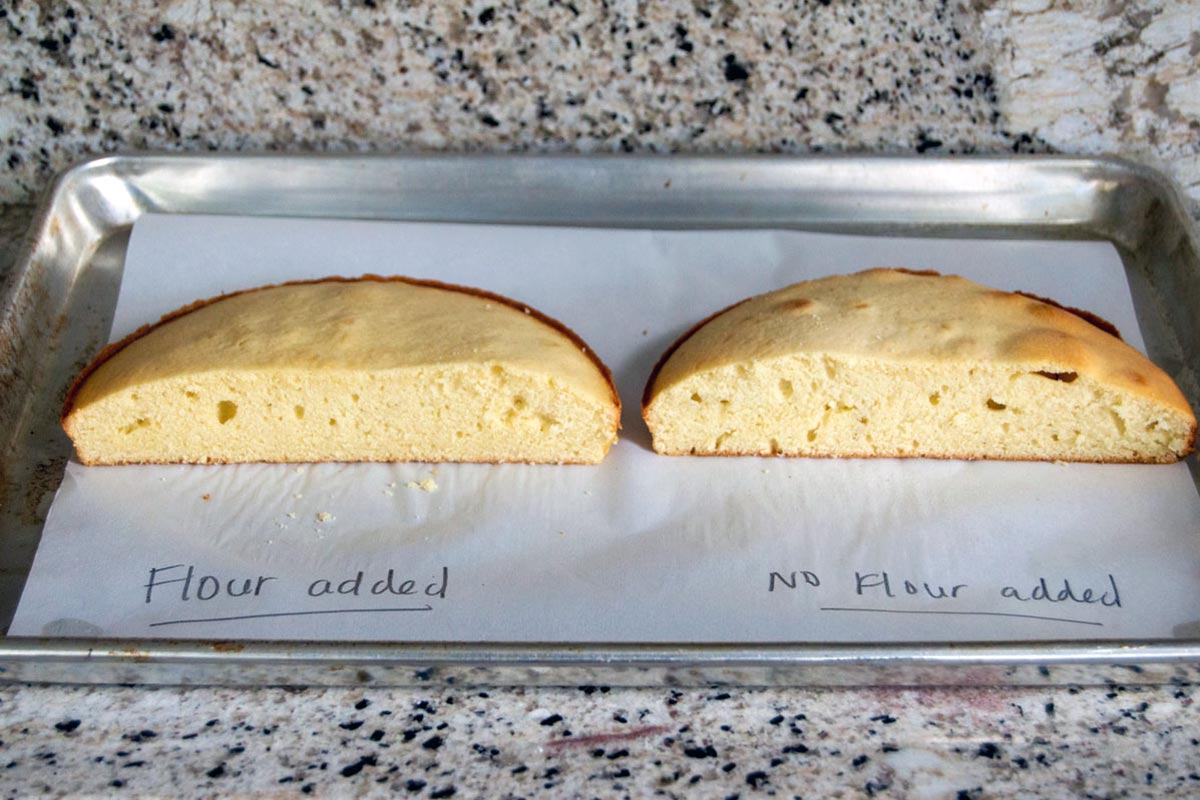
If you’re baking a cake, you’ve already got flour ready to go into the batter, so it’s easy enough to add a little bit with the eggs.
But if you want to take your baking to the next level, use an emulsifier designed specifically for cake baking: Bread and Cake Enhancer. It contains vegetable fats that act as emulsifiers, allowing the fat and water in cake batter to combine more easily and preventing it from breaking.
Simply add 2 to 4 tablespoons of Cake Enhancer to your cake batter along with the eggs to prevent curdling; your cakes will also be softer, moister, and stay fresher longer. A sweet win!
For more of Susan's baking tips, tune into our Instagram Stories on Wednesdays to see her baking from her kitchen and sharing her expert advice.
Cover photo by John Sherman

